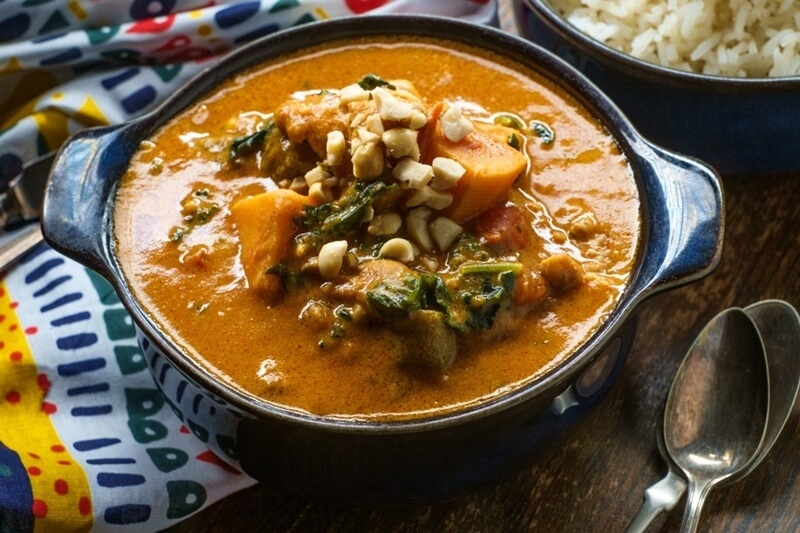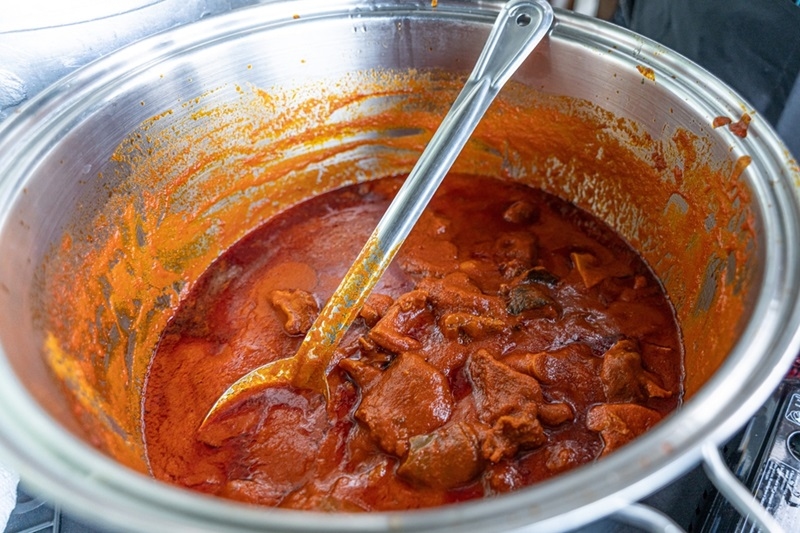
If you have ever been fortunate enough to experience the depth of a highly seasoned African stew, you'll find that it's not necessarily a meal—it's an experience. Full of spices, hearty tomato sauces, melt-off-the-bone meat, and fragrant herbs, African stews are comfort food in its most naked form. But for far too many American home cooks, recreating these intense flavors is a pipedream. The best news: with a few easy tricks, anyone can cook African stews like an expert.
Here, we're going to take you through indispensable African stew cooking tips, explore ancient ways of cooking, dive into conventional African slow cooking methods, provide a Nigerian stew preparation guide, and share intelligent African kitchen hacks. We are also going to share with you how to cook spicy African stew and present to you some famous recipes that you can try at home.
Before discussing methods, it is helpful to understand what African stews are. Stews are an institution across the continent—served over rice, yams, plantains, fufu, or bread. They usually blend tomato sauce, strong spices, and long-cooked meats like beef, chicken, goat, or fish.
African stews are layer upon layer of flavor. Instead of just dumping it all in a pot and wishing, the ingredients get browned, sautéed, and simmered in turn. This produces a rich, complex flavor that gets richer with time. Mastering this trick is the secret to all successful African stew cooking tips.
Here are tried approaches to getting you to turn up your stew game, particularly if you happen to be cooking in a typical American kitchen:
Start by combining fresh tomatoes, bell peppers, onions, and Scotch bonnet or habanero peppers and blending them into a fine puree. This deeply hued mixture is the foundation for many West African stew recipes.
Pro tip: Roast the vegetables lightly before blending to enhance their natural sweetness. This will be the building block of the flavor of your stew.
Beef, chicken, or goat, brown them in oil until they develop a dark brown crust. Caramelization adds depth of flavor. Most traditional Nigerian stew cooking guides prioritize this step. Avoid overcrowding the pan—brown in batches if necessary, then remove and set aside before cooking the sauce.
In African kitchens, the tomato-pepper blend is often fried in oil (a technique called “bleaching” the stew base) until it darkens in color and the raw taste disappears. This is one of the most essential African slow cooking methods because it transforms the flavor completely. Patience is required here. Let it fry low for at least 15–20 minutes, stirring continuously.
Don't empty all your spices in one go. Construct flavor by adding bouillon cubes, curry powder, thyme, garlic, and ginger in small amounts as the stew is being cooked. It is a lifesaving African kitchen hack that home cooks tend to ignore.
Then add in your browned protein and enough stock or water to cover. Reduce the heat and allow the stew to simmer very slowly. This is the key to most African slow cooking, as it will coax the meat out gently to be fall-apart tender and the flavors to meld together so deliciously.

To really appreciate the beauty of African stews, it's not a bad idea to master a traditional one. This traditional dish is consumed every day in Nigeria and comes together quite nicely with rice, yams, or bread.
Base mixture: Puree tomatoes, bell peppers, Scotch bonnets, and one onion together.
Brown meat: Season the meat with thyme and salt. Brown in oil until golden brown. Set aside.
Fry the sauce: Use the same pan and put some oil to sauté sliced onions. Put the mixture that has been blended. Fry on low heat till it thickens and oil begins to separate—20 minutes.
Build the flavor: Put in ginger, thyme, seasoning cubes, and garlic. Stir well.
Simmer: Return the meat to the pot. Add water or broth, cover, and simmer low for 40–60 minutes until the flavors are rich and the meat is tender.
This recipe represents the spirit of a classic Nigerian stew prep guide and is a great beginner-friendly dish to hone your African stew cooking tips.
If you like strong flavors, it is important that you become good at making spicy African stew. Spiciness is a dominant characteristic of the majority of West African stew recipes due to the Scotch bonnet and the African bird's eye chili. Spiciness, however, is about balance rather than just heat.
Insider advice on how to get it right is listed below:
Layer your heat: Combine fresh hot peppers with a sprinkle of dried chili powder for richness.
Balance with sweetness: Add caramelized onions or a spoonful of tomato paste to soften the bite.
Employ whole spices: Toasting whole peppercorns or cloves before grinding delivers warm spice without bitterness.
Control the final heat level: De-seed Scotch bonnets for a milder burn.
These techniques will be your guide in mastering cooking spicy African stew so that the heat enhances the dish, but not overpowers it.
There is a vast West African stew universe to explore that features Nigerian-style stews alone. Each region has specialty ingredients and techniques. Exploring some of them will pop your eyes with potential and refine your techniques.
Here are a few of the classics:
West African stew recipes given here will give you an actual experience of the local spices and techniques.
African stews require long preparation times, but certain African kitchen hacks can eliminate time and effort without affecting true flavors.
Pre-blend and freeze sauce base: Make large batches of the tomato-pepper mixture and freeze in serving quantities. This is one of the top African kitchen hacks for weeknights.
Use a slow cooker or Instant Pot: These appliances mimic traditional slow-cooked African methods with little hands-on time.
Spice-toast: Toast spices for a few seconds before grinding to release oils and maximize flavor.
Batch-brown protein: Brown all your protein at one time and freeze in batches. It makes meal preparation easier without sacrificing flavor.
With these shortcuts, your African stew cooking tips will be more applicable to an American life, but still traditional.
African stews used to be cooked slowly over fire in heavy clay pots. Not too convenient in most US households, but more or less the same can be accomplished with appliances these days.
This is how you can utilize African slow cooking methods:
Dutch oven: Perfect for slow, long stovetop simmering. Maintains heat distributed evenly, just like ancient clay pots did.
Slow cooker: Hands-off cooking is ideal. Brown meat and sauté your base for the sauce first, then put all of it in the slow cooker for several hours.
Pressure cooker or Instant Pot: Shortens cooking time and tenderizes meat ideally. You can get hours of simmering flavor in less than an hour.
With these African slow cooking methods transferred to new household appliances, you can enjoy true stews without spending all day in the kitchen.
Even long-time cooks tend to have issues with African stews. These are some tips:
Too watery: Boil, uncovered, to thicken the liquid and sauce.
Too oily: Drain excess oil after cooking or reduce the amount used at the start.
Needs flavor: Monitor your seasoning layering—add spices, salt, or bouillon. Flavor increments: add.
Difficulty in meat: Not cooked long enough. Learn the African slow cooking method of low and slow simmering to make tender.
These African stew cooking tips applied will make your experience much more and less stressful.
One of the best ways to really connect with another culture is in the comfort of your own kitchen—cooking. African stews are soulful, nourishing, and totally satisfying—and thanks to these simple African stew cooking tips, they're also surprisingly easy for any home cook in the US. So grab your Dutch oven, gather up those peppers, and get simmering. Your kitchen is going to smell incredible.
This content was created by AI